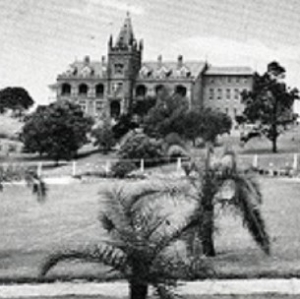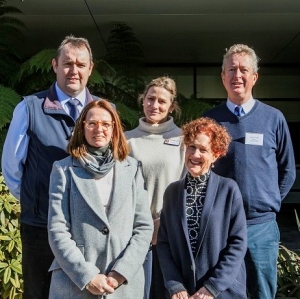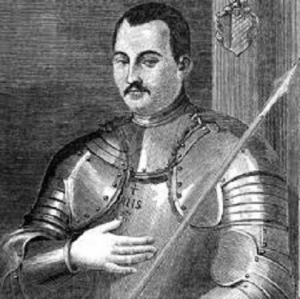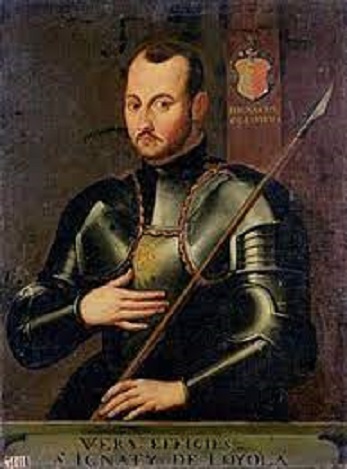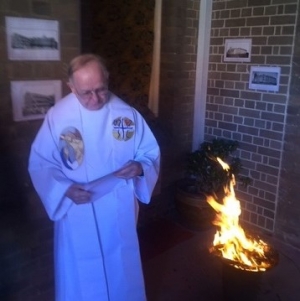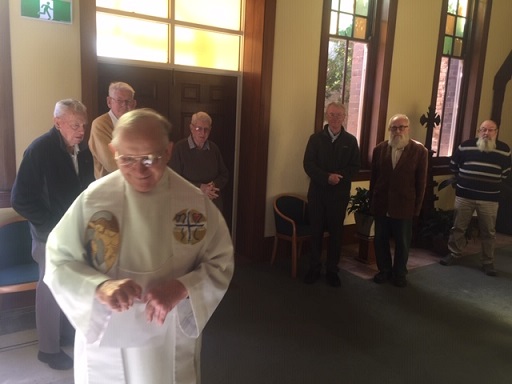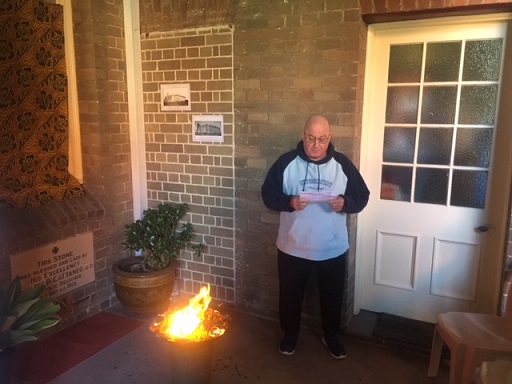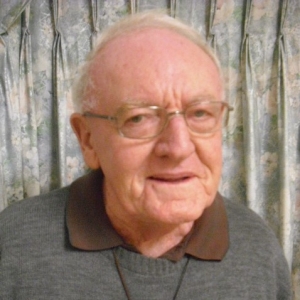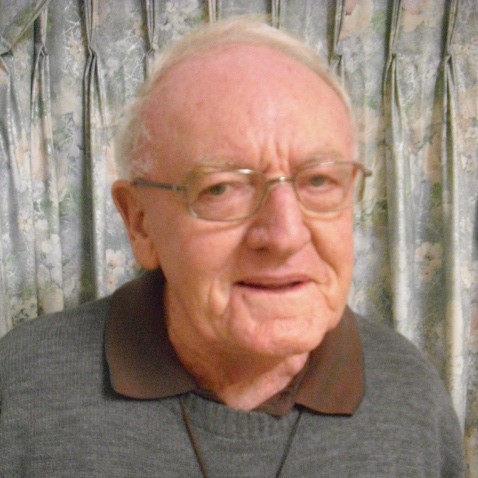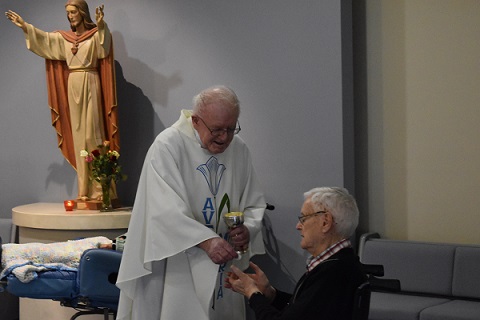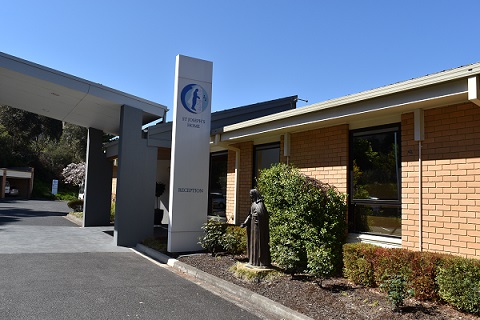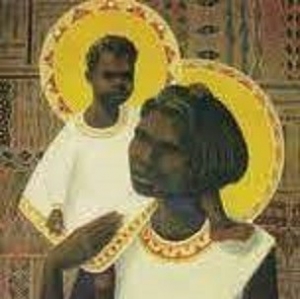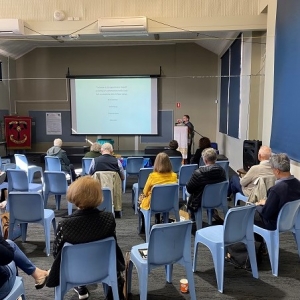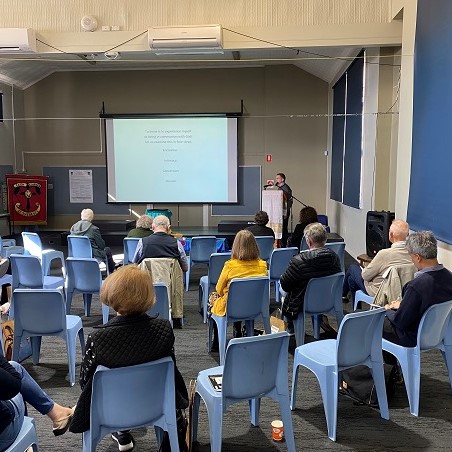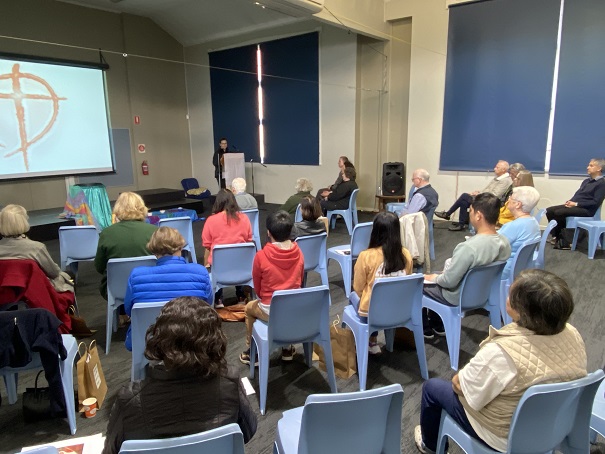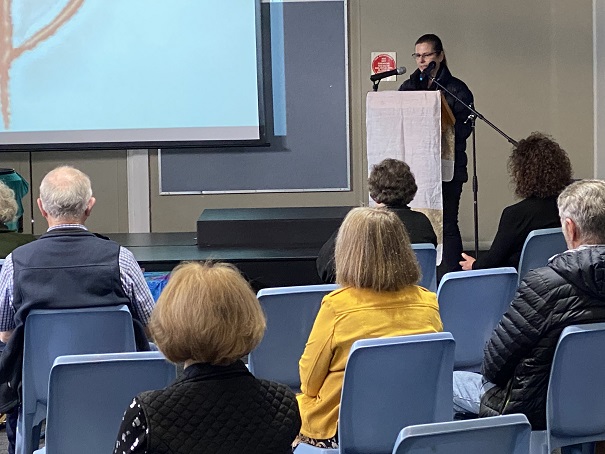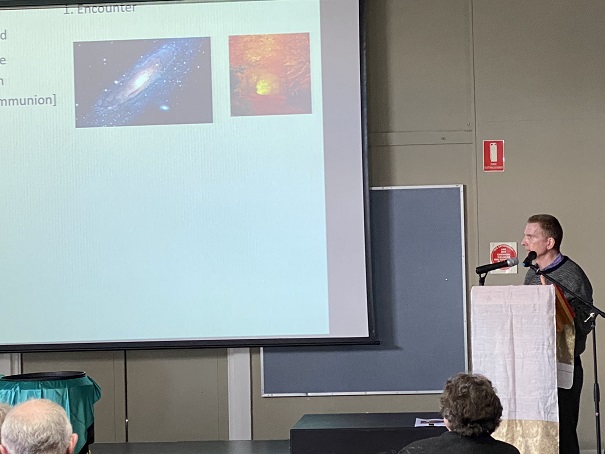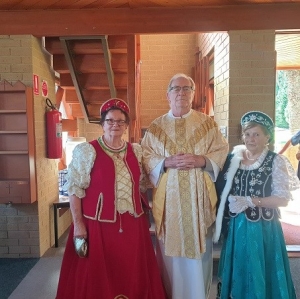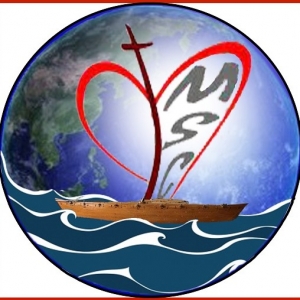Peter MALONE
Back to the West Wing, Kensington. Celebration of 100 years. And back to the photo archives.
Back to the West Wing, Kensington. Celebration of 100 years. And back to the photo archives.
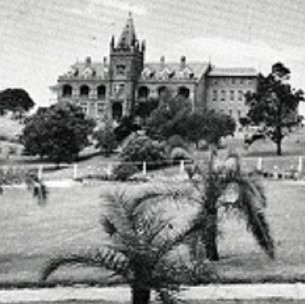
Thanks to Roger Purcell MSC for story and photos.
The community at Sacred Heart Monastery celebrated the 100 years of the blessing of the foundation stone in the West Wing of the Monastery on 15th May, 2021.
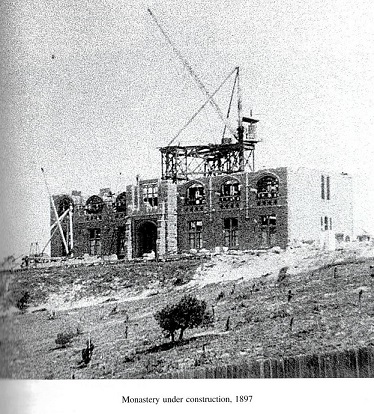
Some statistics and facts
The Monastery was built in 1896 to house missionaries passing through for reasons of health and travel, and for the young men wanting to become MSC. In 1897 there were 6 people in residence and by 1907 there were 51 people in the limited space of the new house. There were 38 students and novices with staff, including superior, bursar, novice master brothers and priests involved in apostolic work. There were ongoing financial difficulties in paying for the building of the house, ongoing costs of accommodation and medical bills for missionaries. In the same time the new Province had been erected in 1905. The young Province was growing quickly and tested on many different fronts at the same time
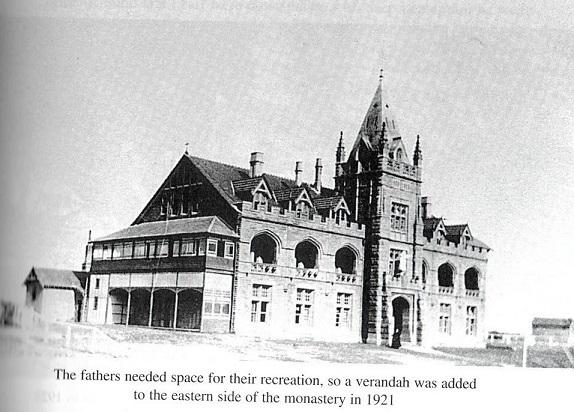
A different motivation for the building!!
Men who were professed and ordained from here went on as brothers and priests to serve the Australian church in parishes, through retreats and parish missions and in the missions of Papua and New Guinea. The whole story is told very well in the history of Kensington in The Monastery of the Hill.
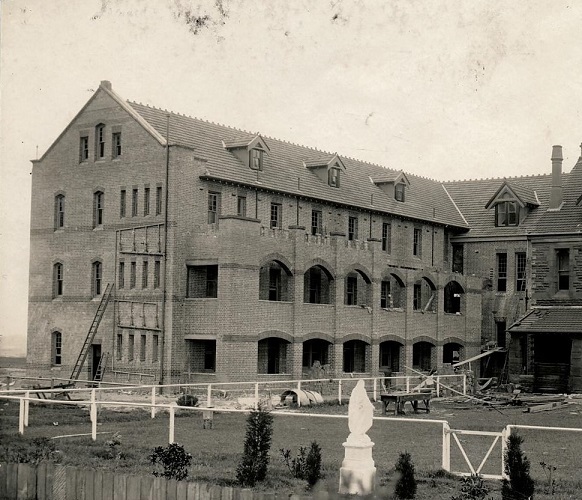
Celebration 2021
Our celebration was on Sunday 16th to allow our parish men to attend. It began with a blessing of the lower part of the West Wing and procession to the Foundation Stone, a recognition of country with a smoking ceremony, blessing of the stone again, reading and reflections. Some documents and photos were displayed in the main corridor inside as we remember those times and all the men who have been through the Monastery, all the work they have done and the people they have served.
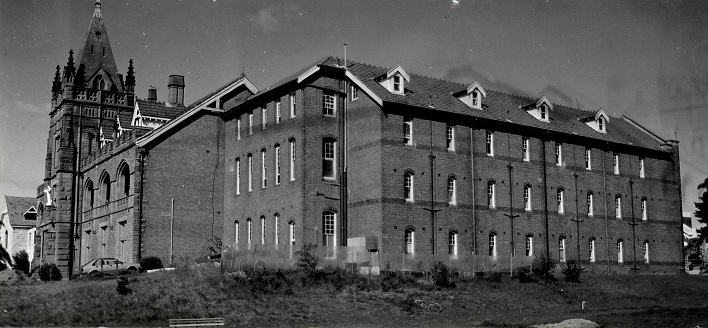
We also note the erection of the new Province of the Pacific Islands, the process towards forming a Province in French speaking Africa, and in the future India and Vietnam. The Mission continues and many other young men are ready to take up the task.
2021 MSC Education Annual General Meeting
2021 MSC Education Annual General Meeting
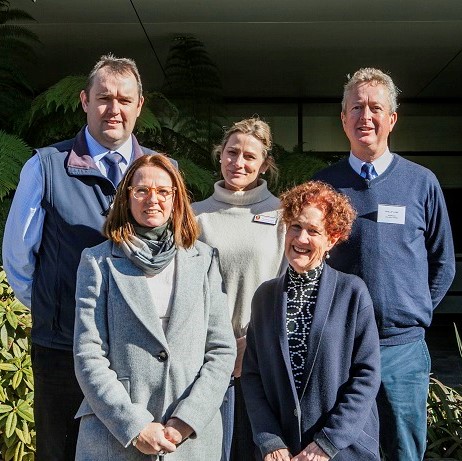
Staff Formation Network.
It was great to be able to gather in person for our Education AGMs in Canberra this year. At a dinner prior we were able to farewell a number of people who have contributed significantly to the MSC education community over many years, including some who were not able to be acknowledged last year.
From the Chevalier Institute we farewelled Alison McKenzie and Bob Irwin MSC who has stepped down from the position of Director, MSC Education. We acknowledged Rita Daniels who finished as Daramalan Principal last year and also Joan Warhurst who resigned from the MSC Education Members’ Council after some eight years voluntary service. Three long serving College Board Chairs have also recently completed their formal commitments to their Boards – Matt Waugh (Chevalier College), Chris Fearon (Daramalan College), and Helen Morrison (Monivae College).
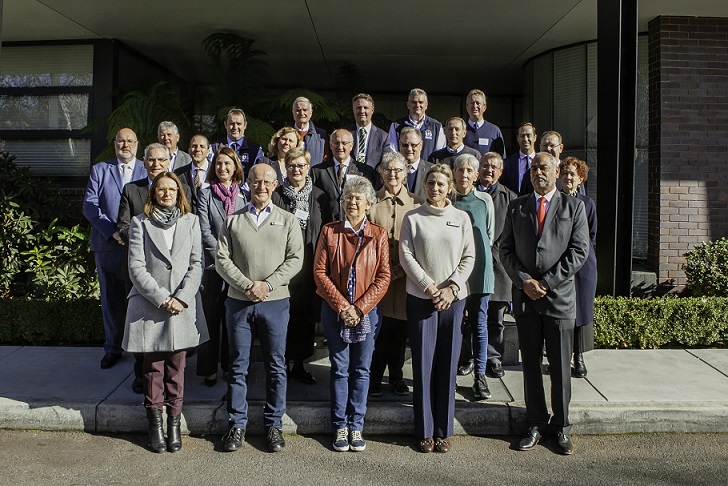
MSC Education, AGM Attendees.
Peter Hendriks MSC was appointed to the Education Members’ Council (EMC) which is comprised of the Company Members that have oversight of the four Colleges. The Business managers and the College Chairpersons gave the Company Financial and Directors’ reports at the AGM and all were able to present quite positive outcomes notwithstanding the challenges that Covid produced for everyone in 2020.
All of the Colleges undergo a quite comprehensive ‘MSC Ethos and Catholic Identity Review’ every five years and time was spent at a meeting after the AGM consulting with Principals, Assistant Principals - Mission, Board Chairs and members of the EMC updating the Review Process document. This is evolving into a very comprehensive and stimulating policy to guide schools in this most important area.
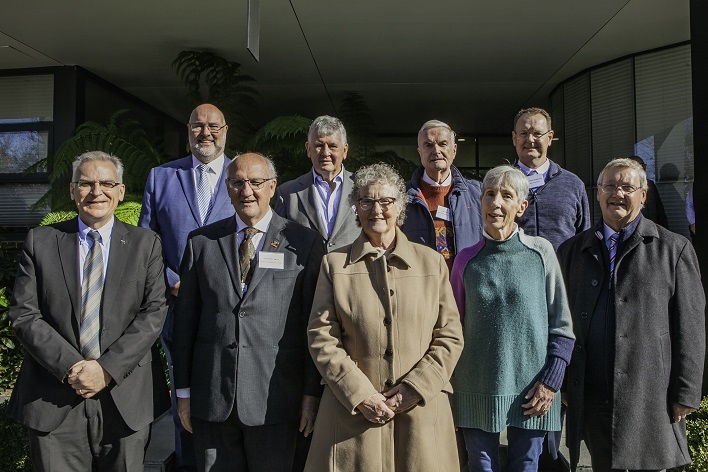
MSC Education, Members' Council.
Special thanks to Rachel Davies and all of the staff at Daramalan College for their warm welcome and generous hosting of our event again this year.
Mark McGinnity
Director, MSC Education
St Ignatius Loyola, his conversion – wounded in battle, May 20 1521.
St Ignatius Loyola, his conversion – wounded in battle, May 20 1521.
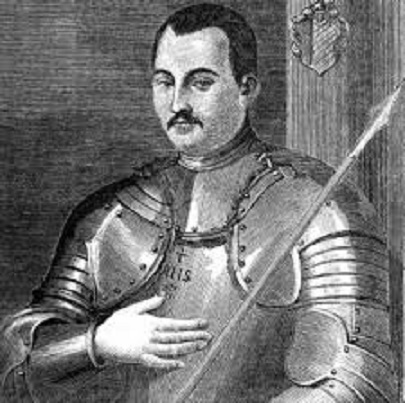
The beginning of half a millennium of his influence on the Church and beyond.
St. Ignatius Loyola was born in 1491, one of 13 children of a family of minor nobility in northern Spain. As a young man Ignatius Loyola was inflamed by the ideals of courtly love and knighthood and dreamed of doing great deeds.
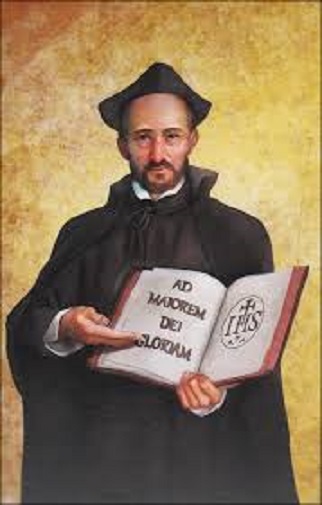
But in 1521 Ignatius was gravely wounded in a battle with the French. While recuperating, Ignatius Loyola experienced a conversion. Reading the lives of Jesus and the saints made Ignatius happy and aroused desires to do great things. Ignatius realized that these feelings were clues to God’s direction for him.
Over the years, Ignatius became expert in the art of spiritual direction. He collected his insights, prayers, and suggestions in his book the Spiritual Exercises, one of the most influential books on the spiritual life ever written. With a small group of friends, Ignatius Loyola founded the Society of Jesus, or the Jesuits. Ignatius conceived the Jesuits as “contemplatives in action.” This also describes the many Christians who have been touched by Ignatian spirituality.
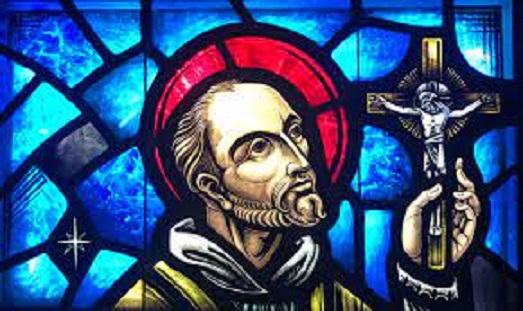
While defending the citadel of Pamplona against the French, Ignatius was hit by a cannonball on May 20, 1521, sustaining a bad fracture of his right leg and damage to his left. This event closed the first period of his life, during which he was, on his own admission, “a man given to the vanities of the world, whose chief delight consisted in martial exercises, with a great and vain desire to win renown” (Autobiography, 1). Although his morals were far from stainless, Ignatius was in his early years a proud rather than sensual man. He stood just under five feet two inches in height and had in his youth an abundance of hair of a reddish tint. He delighted in music, especially sacred hymns.
Spiritual awakening
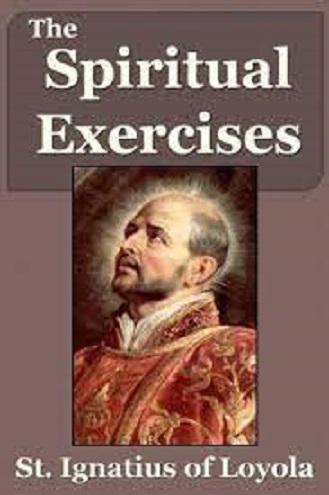
It is the second period of Ignatius’s life, in which he turned toward a saintly life, that is the better known. After treatment at Pamplona, he was transported to Loyola in June 1521. There his condition became so serious that for a time it was thought he would die. When out of danger, he chose to undergo painful surgery to correct blunders made when the bone was first set. The result was a convalescence of many weeks, during which he read a life of Christ and a book on the lives of the saints, the only reading matter the castle afforded. He also passed time in recalling tales of martial valour and in thinking of a great lady whom he admired. In the early stages of this enforced reading, his attention was centred on the saints. The version of the lives of the saints he was reading contained prologues to the various lives by a Cistercian monk who conceived the service of God as a holy chivalry. This view of life profoundly moved and attracted Ignatius. After much reflection, he resolved to imitate the holy austerities of the saints in order to do penance for his sins.
What this Laudato Si' week can mean in today’s world
What this Laudato Si' week can mean in today’s world

We remember the days when we prayed ‘for the Holy Father’s intentions’. Of course, he still needs our prayers. But he also needs our appreciation and understanding of his intentions – and our acting on this.

Laudato Si’ Week 2021, to be held May 16-25, will be the crowning event of the Special Laudato Si’ Anniversary Year, and a celebration of the great progress the whole Church has made on its journey to ecological conversion.
Laudato Si’ Week 2021 will also be a time to reflect on what the COVID-19 pandemic has taught us and prepare for the future with hope.
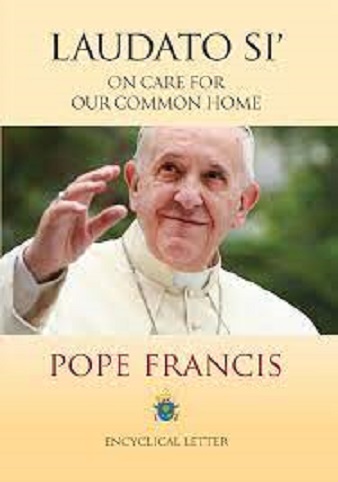
What does 'Laudato Si'' mean to you? Do you recognise it as the name given to Pope Francis' Encyclical letter back in 2015? Papal Encyclicals come and go and are soon forgotten. But this one was different. I think I'm right in saying that it has outsold every encyclical that has ever been produced. And that probably doesn't include those who accessed it on the internet.
So, 'Laudato Si', or 'On Care of Our Common Home', has become a landmark Encyclical, a game changer. And on the fifth anniversary of its publication, a year of celebration was instigated from May 2020 to May 2021, which ends, now, with a final Laudato Si' Week 16-25 May.

The week long event will celebrate the great progress the global Church has made in its ecological conversion journey during the past six years and offer a clear road map for the decade ahead. We know that much remains to be done, but we rejoice and celebrate the steps we have taken so far, and we look to the future with hope.
Why should we celebrate? I think the answer is because it has been taken so seriously, and not just by theologians and academics, but by people all over the world. It is a plea that we care for our common home. So Laudato Si' week is an opportunity for us to remind ourselves of what Pope Francis says in the Encyclical, and of the commitment asked for, which is to a personal ecological conversion.
Brian Austin is a Laudato Si' Animator

100 Years of the West Wing (no not that one in DC), but MSC Kensington Monastery, May 15th, 1921-2021
100 Years of the West Wing (no not that one in DC), but MSC Kensington Monastery, May 15th, 1921-2021

Our West Wing is having a centenary. Opened in 1921, it served as the scholasticate until 1939 when Croydon Monastery was opened. Since then, home for those living at Kensington, a room for those visiting and, in recent decades, upgraded for comfort for senior MSC.
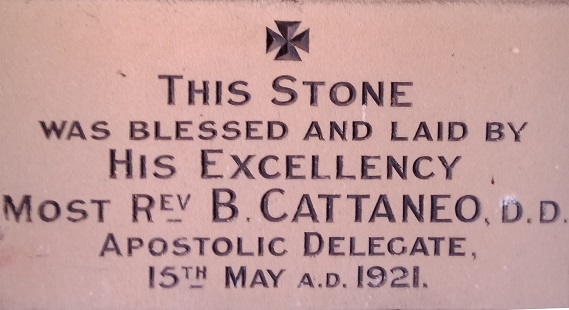
Roger Purcell has alerted us to the centenary. A commemorative celebration was held last Sunday, presided over by Community Leader, Steve Dives. Roger has sent pictures but has also been delving into the archives and sent many photos recording the building of the Monastery and of the development of the West Wing. Too many to post today but - preview of coming attractions - the intention is to post them next weekend, time for a better and closer look.

The ceremony - and some familiar faces.
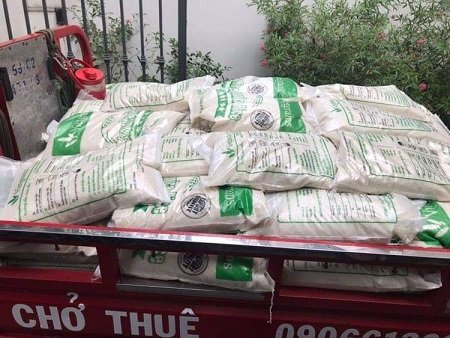
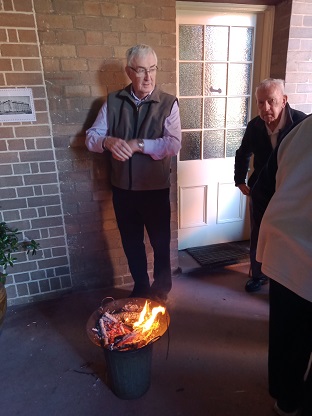
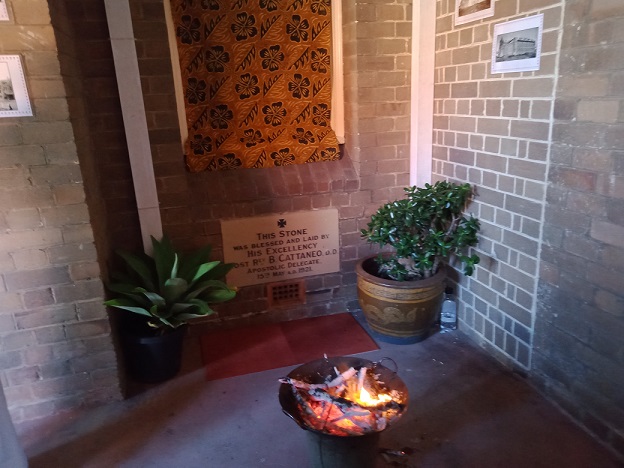
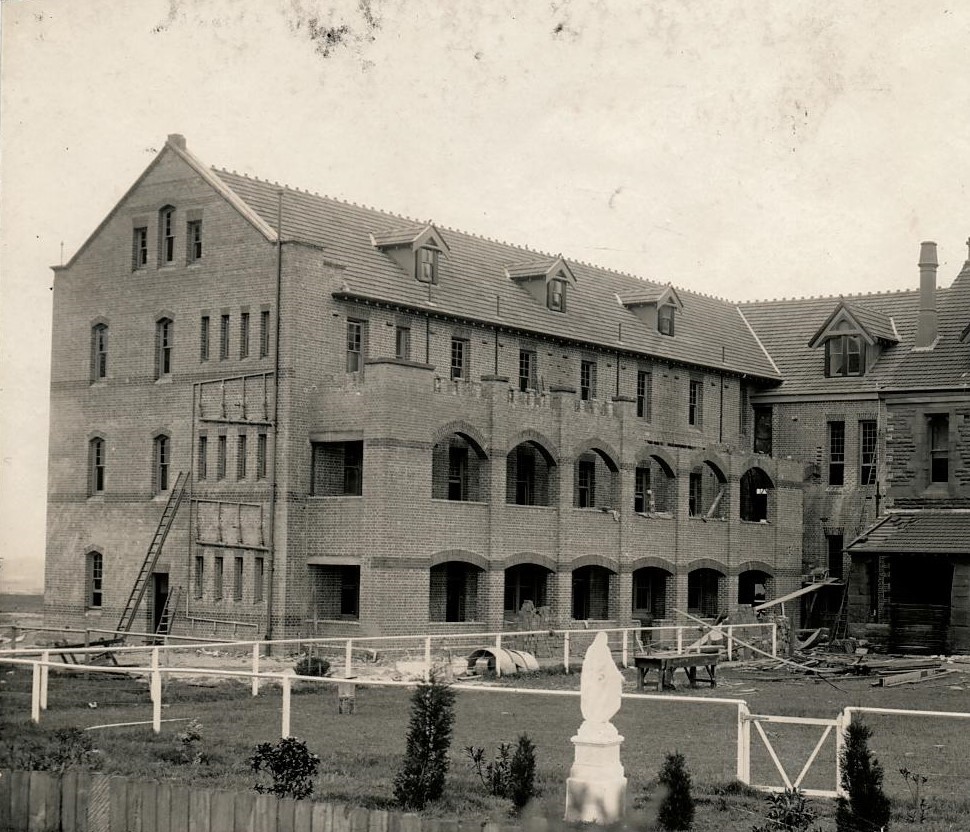
Michael Sims MSC, A Missionary’s Story
Michael Sims MSC, A Missionary’s Story
By Ray Carroll (coach: Assumption College, Kilmore). The Northern Central and Whittlesea Review.
While interviewing St Patrick’s parish priest Father Prakash recently, I also spoke to one of his friends briefly visiting.
Father Michael Sims, a Brunswick boy, has spent more than 40 years as a missionary in the Northern Territory and Papua New Guinea.
His dad, John, died in Bairnsdale when Michael was just five and he has much to his mother, Ellen, who passed from this life in 1994.
Educated at primary school in North Brunswick, then St Patrick’s East Melbourne, Michael’s tertiary education included study of philosophy and theology.
After ordination his priestly journey took him via Canberra’s Daramalan College, then Douglas Park, New South Wales, Port Keats in the Northern Territory, then Bathurst island in the Tiwi Islands from 1971 to 1976.
It was during the latter period he introduced Kevin Sheedy to the rich vein of indigenous talent on the islands. He is held in high regard by the legendary Sheedy.
Beyond the Tiwi, Michael served the people of Milne Bay province in PNG for 35 years and has great memories of the people he encountered. The life could be tough and often spartan, the warmth of the people was a standout.
After faithful service for more than four decades, Michael in recent times has been domiciled at St Joseph’s Northcote.
There he tended to Dave McCormack, the father of magpie “great” Peter, an ex-Assumption College student. Dave passed away recently age 100.
The most influential people in this fine priest’s life were his mother and grandfather and also heroic saints and the achievements of good people.
His advice to youth is to simply is simply “loyalty to the motto of your school” and “listen to the wisdom of folk who have lived a long time”.
Michael’s plan is now are to continue as St Joseph’s chaplain, remain interested in daily events and write his life story.
Always interested in sport, he recalls the year he left Melbourne for good – it was 1956 – Melbourne Olympics year.
As a teenager he won a radio 3XY racecourse tipping competition and the final of Kia Ora sports parade, age 16.
Before he thought of a priestly life, Michael worked in insurance.
Walking to work one morning along Flinders Lane, he heard an inner voice urging him to venture to a higher calling.
Father Michael Sims is a truly good man and his life has been one of faithful service to God.
May, Month of Mary, Featuring The Madonna of the Aborigines
May, Month of Mary, Featuring The Madonna of the Aborigines
Aboriginal Madonna - Karel Kupka 1918-1993
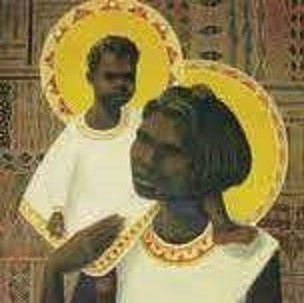
Our Lady of the Aborigines
In the 1950s, exiled Czech artist Karel Kupka, arrived in Arnhem Land. His Catholic faith was subtly remade as he studied the art of indigenous Australia. He brought together these ancient traditions in a striking painting of the Madonna.
It was a great joy to see Karel Kupka's painting of the Aboriginal Madonna when I visited Darwin recently.
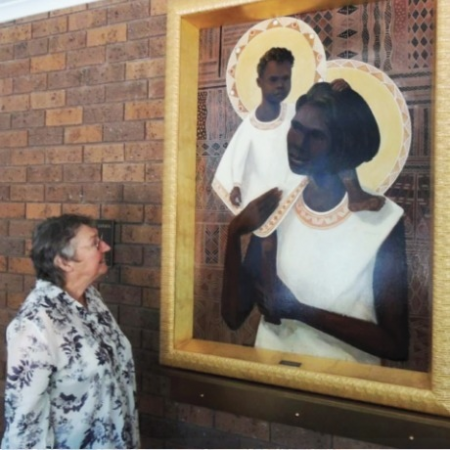
I met Karel at Maningrida while I was working there as a nurse in 1970. He had visited Arnhem Land several times since 1956 to learn about Aboriginal art and he knew many of the artists. He was a charming person who was always interested to learn about the lives and thoughts of those he met and he was always willing to be part of the community where he was staying.
I remember that one evening he cooked dinner for some friends at Maningrida and I was very impressed with the wonderful meal he produced from the limited and diverse ingredients that were available. I am sure he would have been an excellent chef – as well as a lawyer, artist, collector, writer and anthropologist.
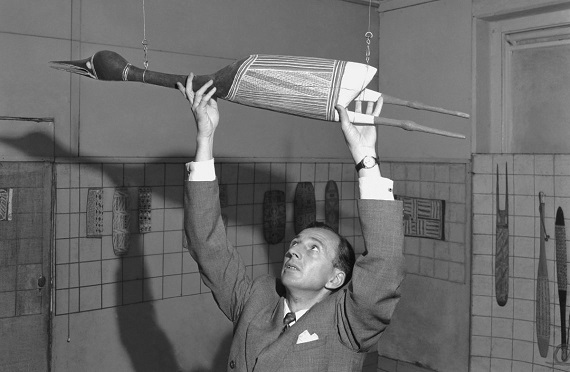
When I left Maningrida I kept in touch with Karel and met him several times when he was visiting Australia. We often talked about the Top End and he told me that when he was working on the early sketches for the Madonna he was on Bathurst Island.
He had intended to stay there but the mosquitoes were worse than usual and when his hands became swollen and painful he knew he had to paint somewhere else.
Older people will remember that when Australia changed to decimal currency in 1966 the one dollar note had the Queen and the Australian coat of arms on one side and images painted by Aborigines on the other.
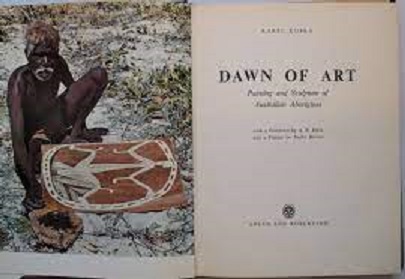
The main image was a bark painting by David Malangi, an artist from Millingimbi. Karel had lobbied the people in Canberra to feature Aboriginal art on the bank note and had submitted the Malangi painting which was part of his collection.
A piece in The Monthly by Nicholas Rothwell explains the origins of the Aboriginal Madonna:

While he was on the Tiwi Islands, Kupka met Bishop John Patrick O'Laughlin... and the bishop, on learning that Kupka was not only a Catholic but an artist, asked him to paint an Aboriginal Madonna for the new cathedral.
Together with the administrator of the Star of the Sea, Fr Frank Flynn, the Bishop showed Kupka the cathedral plans.
Kupka accepted at once, and old-timers in Darwin remember his elation in those days, when he was newly back from the bush and full of stories of adventures, and when his grand ideas were taking shape.

He set up a makeshift studio in one of the schoolrooms of St Mary's Convent, surrounded himself with his haul of carvings and bark paintings, and plunged himself into the task.
For months he had seen beauty and painted nothing; he had been steeped in a world of worship and magic; his own faith had been subtly remade.
Each day, after he had made a beginning, the bishop and Fr Flynn would visit the studio and check on his progress; and they were particularly touched by the solution the artist had found for the problem of the Madonna's pose.
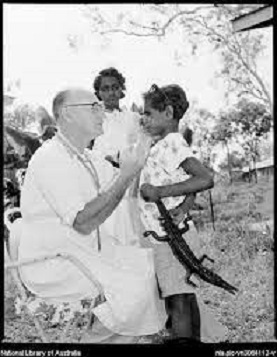
Instead of cradling the Christ-child in her lap, the Madonna is carrying her son on her shoulders, in the fashion of Aboriginal women from the Tiwi Islands and the Daly River, with one of her hands clasping the baby by the ankle and the other resting gently on his hip.
They were also intrigued by the features of the virgin: she had a noticeable air of self-possession about her. They had asked Kupka to present an idealised version of Aboriginal womanhood, blending aspects from different models at the various Catholic missions he had visited.
The Madonna's face, though, was clearly delineated, and her character seemed precisely caught as well, much like the Madonnas of certain Renaissance artists, who have the look of a living individual.
There has been speculation about her story in church circles ever since: some think Kupka based her features on a Tiwi woman; others say she has the manner and the bearing of a young mother from Port Keats.
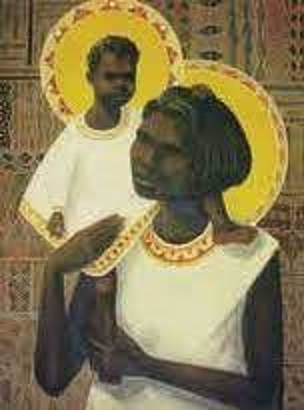
MSC Parish Formation Weekend, Moonah.
MSC Parish Formation Weekend, Moonah.
Report by Dominic Gleeson MSC. Members: Narita Perotta, South Australia, Marian England, Kippax ACT, Michael Hangan, Deacon Moonah.
The weekend began on Friday evening with approximately 40 participants from the parish of Moonah-Lutana, and there was an equal representation of men and women, from all age groups and varied cultural backgrounds. There were even a number of children accompanying their parents who in fact led the way for us all to enjoy the place, full of youth-filled, lightness and peace.
We began on Friday evening with a theme from Hosea, "I will lead you into the wilderness and speak to your heart" (Hosea 2:14). We invited participants to allow themselves to be led into the wilderness so that God's heart can speak with their heart. We ritualised this with an experience of a 'well'. We meditated on the story in the Gospel about the "Woman at the Well" and how Jesus invited the Samaritan woman to welcome the life giving waters that he saw in her - flowing within both of them during their encounter. We enhanced this story by explaining to those gathered that Jesus talks about coming to the living well within. It has the potential to bubble up to the living well within. It has the potential to bubble up and produce the words and thoughts that we may not have come to by ourselves. The challenge that we face is that we dare to go there; to go down into the well; that we are empowered from a deeper place within our hearts.
When we descend into the depths of our own interior well it is there, we have the opportunity to encounter the heart of Christ. This is the place of deep interior listening to our hearts journey. The well-being the symbol of the way God is holding us. Through this experience of being together for the weekend we ask God to bring to our minds the moments in our personal lives where we have stood at the edge of this blessing and to know that each of us are a gift of God - as the woman at the well discovered.
During the course of the weekend the team invited those gathered to 'stay with their heart'. Our desire was to allow them to be true to their lived experience, now! and for participants to grow from that place - to grow into their own places of the heart, the dwelling place of God. The team were encouraged by parishioners' strong sense of 'quiet' and their desire to be still, silent and to allow the spirit to flow through each one, knowing that we are loved and cherished by God. The team led those gathered through different aspects of the Spirituality of the Heart of Jesus. During the varied prayer experiences, we invited participants to ground their own desire in Jesus' desire for them - first. We had sessions which appealed to the intellect and were rich in content. We invited those gathered into further sessions which were of profound silence and contemplation, reflective journaling - and we gave them some time of gazing into their own graced, gifted nature, creation, and focussing on a specific icon of the Sacred Heart of Jesus.
We were extremely grateful for the welcome and receptiveness of the St Therese, Moonah-Lutana parish community. The team thought it would be beneficial to include some of the responses we have received from those parishioners who attended the weekend.
One gentleman mentioned that, before this retreat, he had been 'drinking from a dry well' and now (halfway through the retreat), his 'well' has some 'living/life-giving water' in it.
Krish Mathavan adds: I attended the 'Retreat into the heart of Jesus' with the 20-25 others we had on each day, and loved it. I was inspired to share some of that learning in a homily on the vine and branches during the weekend masses! The team (Narita, Marian and Dom) led us gently. The meditation on the woman at the well set the tone and allowed us to enter more deeply into our hearts to encounter the heart of Jesus.
A spirituality of the heart can never take on a one-size/template fits all approach but needed to be open to where people were at. i was impressed with how the three interacted and got to know the parishioners who attended, and brought their own unique styles and stories to their presentation. Many found themselves refreshed by both the input and challenged in learning a new way of praying.
While some tweaking is still needed in the presentations, it was a good beginning for a new team, and the authenticity they bring to the material quite inspiring and welcome. I hope they will get to share their wisdom in other communities from here on.
Multicultural Australian Catholics - Discovering the Melbourne Hungarian community.
Multicultural Australian Catholics - Discovering the Melbourne Hungarian community.

One of the features of multi-cultural Australia is the variety of communities around the nation who preserve many of the traditions of the country of origin, continually broadening horizons.
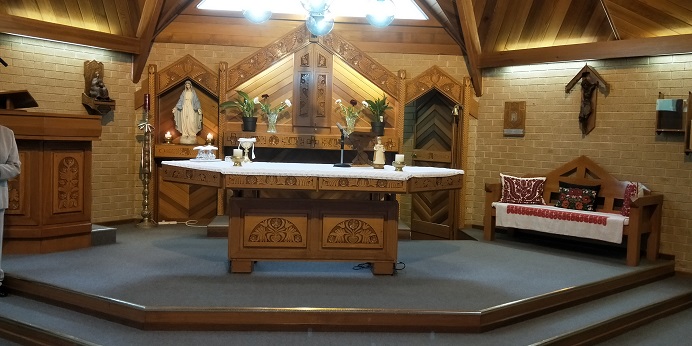
The Australian Catholic Church is also multi-cultural, Masses, gatherings and celebrations in the languages and styles of the countries of origin.
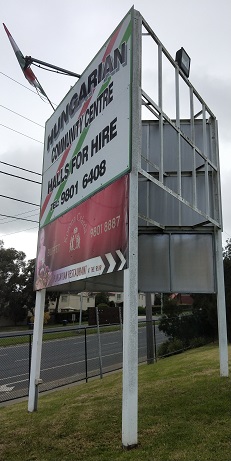
Recently, the Melbourne community has discovered the Hungarians in the city. In the absence of their chaplain this year, they have asked Paul Castley to celebrate with them twice-monthly.
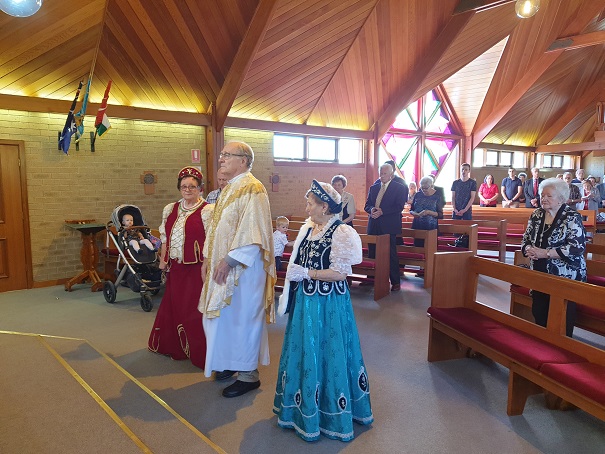
They have a fine church, grounds, meeting hall and other facilities (which can be hired), the Church of Szent Istvan (Stephen of Hungary). They also celebrate at St Colman’s church in Balaclava.
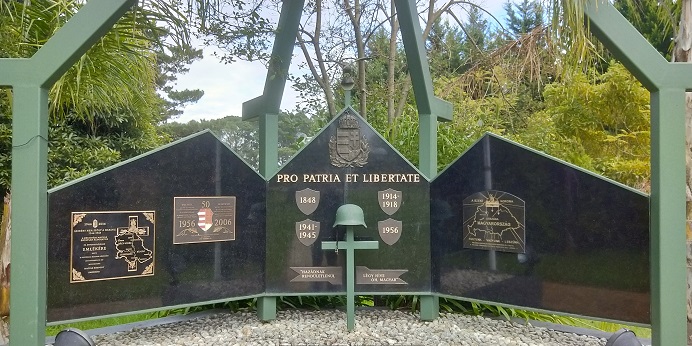
Their Easter Sunday celebration was colourful. And, while the presiding priest greets in English (and the homily and Eucharistic Prayer), the responses and readings are in Hungarian – multi-lingual culture.
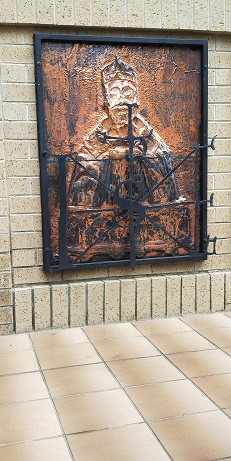
Szent Istvan icon
And a surprising Jesus image in the sacristy!
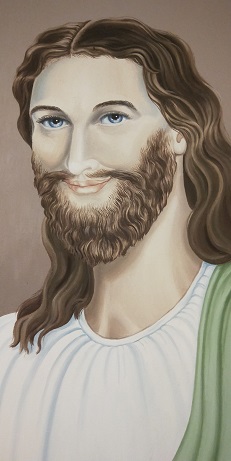
Congratulations! New MSC Province, Province of the Pacific Islands
Congratulations! New MSC Province, Province of the Pacific Islands
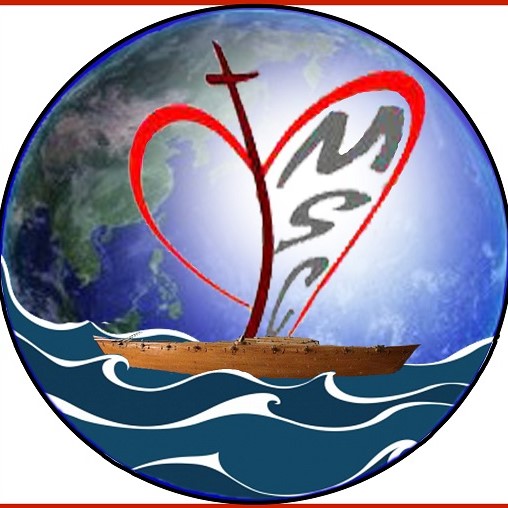
Here is the message from the Provincial Superior, Fr Tamati Sefo MSC, part of the Decree from Rome - and an explanation of the Province Logo. With thanks to Robati Tebauuea MSC, Suva, for the documents.
The message of the Provincial, Fr Tamati Sefo MSC, to the members.
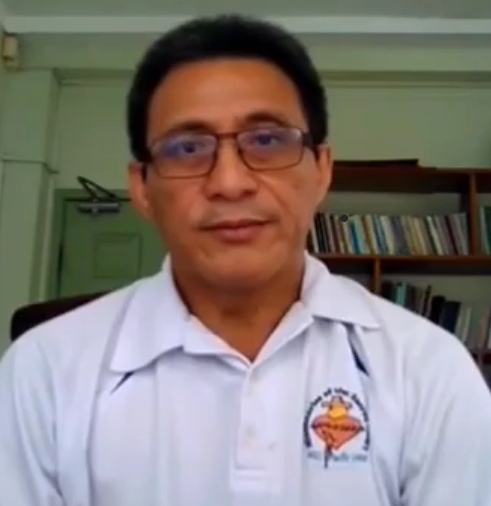
Greetings from Sacred Heart House!
The 10th of May 2021, is a historical day for us. It is a day for all of us to celebrate with gratitude and joy, for today marks the official erection of the PROVINCE OF THE PACIFIC ISLANDS. The name of the Province emerged after prayerful discernment and community consultation.
The 10th of May is a significant date for us for it was on this date in 1888 that the first Missionaries of the Sacred Heart from France arrived in Nonouti in Kiribati. We are grateful to God for their faith and courage for coming halfway around the world to spread the love of the Sacred Heart which they did with great enthusiasm and conviction. And so it is with deep gratitude to the French province for having sent these first missionaries to us. Today we are celebrating the erection of our province all because of their hard work, commitment and faithfulness to the Mission of our Lord. The untiring work of the first missionaries throughout all these years was rewarded when the MSC Pacific Union was erected on 10 May 1988. The late Father Joe Heggelin was the first Union Superior followed by subsequent Union Superiors and their Councils. With their gifts and talents, they have led and guided the Pacific Union with passion and determination. Today I want to acknowledge their wisdom, hard work, and foresight in paving the path for us. Today is a celebration of their hard work over the years of preparing us to become a Province.
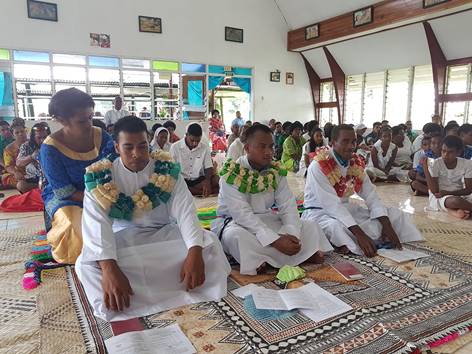
I also take this opportunity to thank the past and present several Administrations who have supported and guided us through the years that we were a Union. We also thank the Australian Province and the Papua New Guinea Province who both played a major role in our growth toward becoming a Province. And on behalf of the Province, I would also like to extend our sincere gratitude to all the entities of the congregation who have generously provided us with finance and personnel over the years.
I would also like to acknowledge the great contributions and hard work of all our members who have played an important part in this exciting journey. Many of them past have passed on; their good work, sacrifices, and love will never be forgotten. We pray that our good Lord reward and welcome them into eternal life. I would also like to thank our Sisters, the Daughters of Our Lady of the Sacred Heart, for their prayerful support and loving kindness.
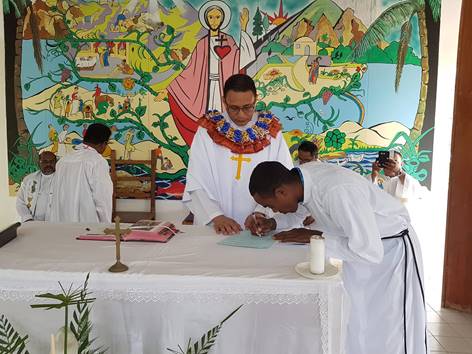
The contribution of our benefactors, Lay MSC members, staff and parishioners over the years also needs to be acknowledged. Their sacrifices and generosity make it easier and possible for us to continue the Mission entrusted to us. They too play a vital and important role in our journey.
Today I am happy to say that many young men are attracted to our Congregation taking up the challenge of spreading the love of the Sacred Heart. The Province continues to grow in numbers and in many other aspects.
We, as a new Province will now prepare for our first Elective Provincial Chapter. This is a very important event. It is at our first Provincial Chapter that we will elect our first Provincial and his Council to take us forward in the next three years. The future of the Province of the Pacific Islands looks very bright. I am very confident that we will continue to grow in faith and maturity. I am also very optimistic that the new Provincial and his Council will continue to bring us together as brothers in order to carry on the mission of our Lord with zeal, passion and faithfulness.
I conclude by taking us back in time when our humble Congregation was born in 1854. The Society of the Missionaries of the Sacred Heart of Jesus was founded during the time of the French Revolution. It was a time of many difficulties, indifference and uncertainties in life. It was then that our founder, Jules Chevalier, saw in the Heart of Christ a remedy for our troubled world.
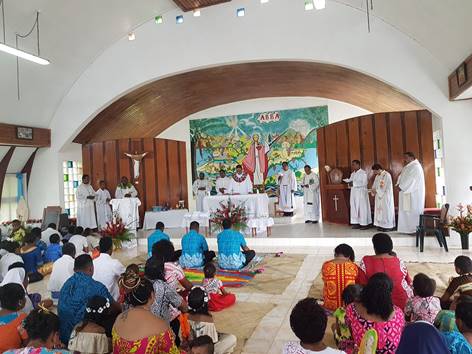
Likewise, today, amidst the fear, suffering and horror of the pandemic that is ravaging the world our new Province is emerging. We want to be a sign of hope and love to everyone as we stand in solidarity and prayer with all who are suffering from this deadly disease.
As members of a new Province, let's fix our eyes on Jesus and together contemplate his compassionate heart. It is in the compassionate heart of Christ, we can find true healing, peace and comfort of this challenging time.
May God bless and protect us all from this pandemic. May our Mother Mary, Our Lady of the Sacred Heart, continue to intercede for us and protect our humble Province.
Thank you and have a prayerful and enjoyable celebration.
Tamati
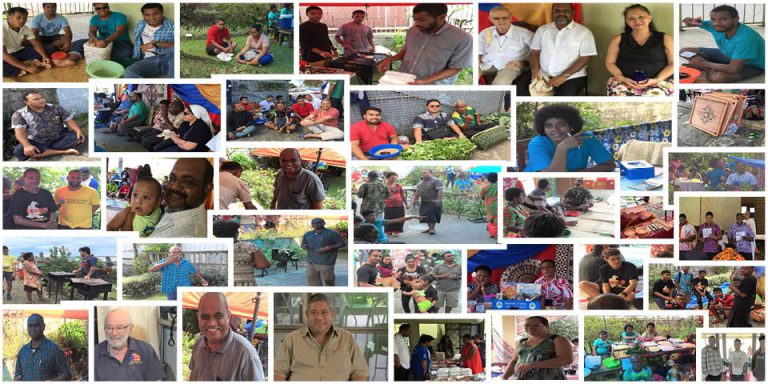
Photo: Warren Perrotto MSC
From the Decree of the Direction of the Province, from Fr Mario Abzalon Alvarado Tovar MSC, Superior General. 10th May 2021.
Fr Tamasi Sefo, until now the Union Superior, is hereby appointed the first Provincial Superior of the new Province of the Pacific Islands. His Provincial Council will be comprised of the same conferees who made up the Union Council at the time the direction of the new Province, they are: Br Kaake Joane, (First Counsellor), Fr Vito Kelekele (Secretary), Fr Tetaoiti Tokanikai, Fr John Fong, Fr Poneventura Luatuanuu, Fr Beniata Bakatete, Fr Robati Tebaiuea (members).
Description of the logo of the MSC- Province of the Pacific Islands.
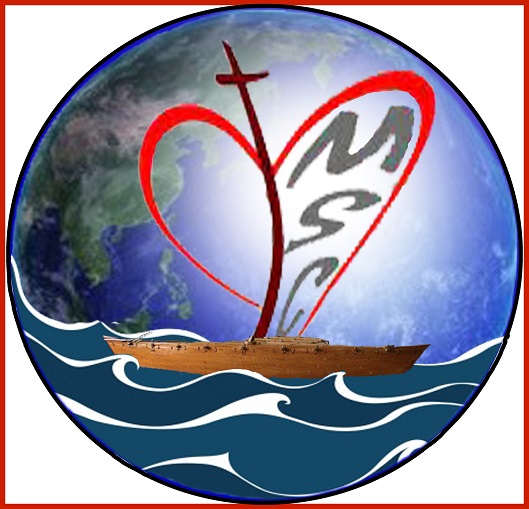
Ocean/sea - The sea or ocean is one of the common symbol in the Pacific Islands. All Pacific Islands are connected to each other by the sea. It is a symbol of our journey of joy and peace but also of Ups and Downs. Each wave contains challenges, determination, courage, faith, trust and hopes. (The ocean is also a symbol of life)
Canoe- a canoe is another common symbol in the Pacific Islands. It represents all of us as members of the Province of the Pacific Islands. It can also be a symbol of community Life. We are all on the canoe, sailing and journeying together to the world to proclaim God’s love. Each one of us plays an important role in helping each other in the mission.
The color of the canoe. The color Blue represents our Mother Mary, Our Lady of the Sacred Heart who has played an important part in our journey.
Sail- the sail that is used in the logo is the LOVE OF GOD that drives the province and congregation to the future. As the cross attached in the canoe, this symbolize the fact that Jesus is journey with us. He is our driving force. He will be always with us even in times of difficulties and uncertainties.
Globe/world- this represent that fact that we are not only mission in the Pacific Islands but also we are called to spread the love of the Sacred Heart of Jesus to the whole world. As our motto says, May the Sacred Heart of Jesus be everywhere loved.
